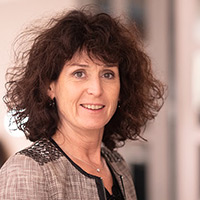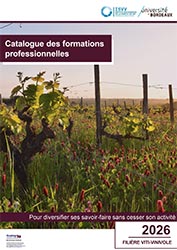Objectives
Know how to use Non-Saccharomyces yeasts with technological properties of interest (bioprotection, bioacification, etc.) in a context of transition (adapting to climate change, reducing sulphites).
 Periods
Periods
Dates: 27 May 2026
Duration and timetable: 1 day or 7 hours
 Price
Price
350 euros TTC - (lunch included)
 Public, prerequisites
Public, prerequisites
Winegrowers, Oenologists, Technical managers, Cellar masters
 Level
Level
Professionnal
 Number of places
Number of places
- Minimum : 9 participants
- Maximum : 20 participants
Program
- Non-Saccharomyces yeasts of interest (Lachancea, Metschnikowia, Torulaspora): genetic and phenotypic diversity
Implementation of Bioprotection - What applications are there for mixed fermentation with Saccharomyces cerevisiae (bioacidification, reduction in alcohol or
- volatile acidity, modulation of the aromatic component)?
- What tools are available to identify non-Saccharomyces yeasts? Taking samples in the winery.
- Discussions/feedback from the field with users
- Tasting of trials for the trainees present
- Be able to choose the Non-Saccharomyces yeast species best suited to your needs
- Know how to use them to make the most of their technological properties (doses, time of addition, co-inoculation or sequential inoculation, etc.).
- Isabelle Masneuf-Pomarède, Professor, Bordeaux Sciences Agro, ISVV
- Marina Bely, Associate Professor, ISVV
- Julie Maupeu Microflora ISVV
Teaching methods
- Presentations with discussions and exchanges
- Distance learning available
- Trainee booklet
Validation procedures
- Certificate of achievement
- Placement test
Need more information?










